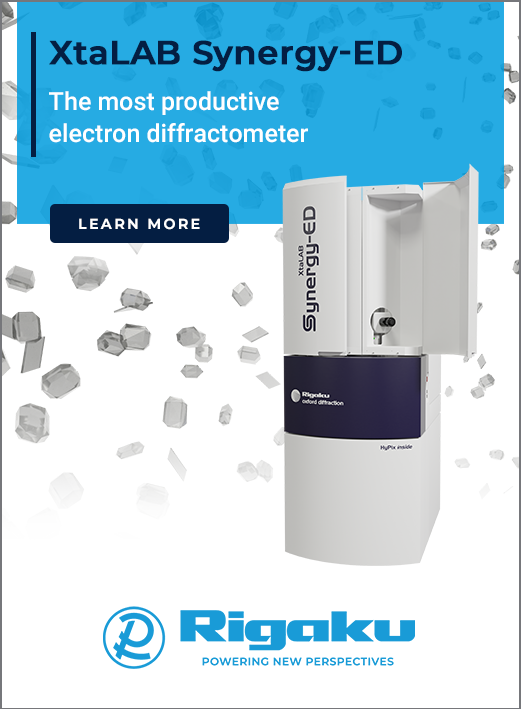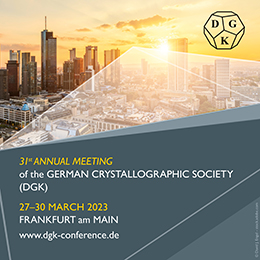


Feature article
Crystals in trash
![Thumbnail [Thumbnail]](https://www.iucr.org/__data/assets/image/0003/155478/IUCr-TOC.jpg)
The 2015 American Crystallographic Association Transactions Symposium on Crystallography for Sustainability highlighted the impact of crystallography-based research on sustainability (Helliwell, 2015b). Specifically, the fundamental crystallography-related research on health, structure-based drug design and energy, and investigation into crystal structures for hydrogen storage, has directly addressed the United Nations Millennium Development Goals on combating diseases and ensuring environmental sustainability (Helliwell, 2015a). Through this article, we intend to disseminate how powder diffraction with in-house laboratory and synchrotron X-ray sources is contributing to waste management and valorization – an application of crystallography that is key to finding alternative feedstocks for energy-intensive industries and enhancing environmental sustainability.
Traditionally waste management encompasses three practices: recycling, incineration for energy recovery and landfilling. Amongst these three practices, recycling is the most preferred, followed by incineration for energy recovery and landfilling. In contrast to recycling, landfilled materials are lost forever and hinder progress toward a sustainable materials system (Olivetti & Cullen, 2018). As an alternative, waste incineration in controlled facilities allows energy recovery and has the potential to contribute toward the sustainable materials system (Walser et al., 2012). This is because the product of the waste incineration process is the waste-to-energy ash – a material that can become part of the sustainable materials cycle. Specifically, waste-to-energy ash could substitute traditional feedstocks in environmentally intensive industries, such as cement and metals (Kumar & Garg, 2022; Cheisson & Schelter, 2019). Despite these possibilities of becoming a part of the sustainable materials cycle, at present, the waste-to-energy ashes are mostly landfilled because of two factors. First, there can be tremendous variability in the ash composition. The variability comes from the differences in waste composition and the fluctuations in operating parameters, such as temperature and O2 content, at an incineration facility (Kumar & Garg, 2021). Second, the ashes can be a repository of heavy metals, which may render them hazardous. The hazardous nature of ash depends on the heavy-metal speciation, which needs to be better understood for waste-to-energy ashes. Because of these uncertain factors, the waste-to-energy ash is not a reliable feedstock for any industry, so it is landfilled.
In our current research, we seek to uncover the compositional variability and heavy-metal speciation in waste-to-energy ashes by studying a diverse set of ashes collected from spatially distinct waste-to-energy facilities in the United States. In the United States, ~10 million tons of waste-to-energy ashes are landfilled annually. Therefore, by understanding the diversity in composition, we aim to integrate these ashes into the sustainable materials cycle. However, understanding the mineralogy of materials as complex as these ashes is challenging. This is because, in the scientific literature, ~150 distinct mineralogical phases have been reported to constitute waste-to-energy ashes (Piantone et al., 2004). The scientific literature primarily relies on in-house laboratory powder diffraction experiments to identify and quantify the mineralogy of waste-to-energy ashes. However, there are multiple technical limitations to the in-house laboratory powder diffraction measurements for complex systems such as waste-to-energy ash. These limitations include (a) differences in the mass absorption coefficient of phases present in the waste-to-energy ashes, (b) limited penetration depth of X-rays, (c) preferred orientation effects for platelet and needle-like particles, (d) uncertainty in identifying phases because of peak overlaps, and (e) the anisotropic diffraction peak broadening (De la Torre et al., 2001). These limitations increase the uncertainty in identifying the mineralogical constituents of the waste-to-energy ashes and question whether the reported ~150 distinct mineralogical phases are actually present. In our research, we are addressing these limitations by probing the mineralogy of waste-to-energy ashes with penetrating synchrotron X-rays.
![[Fig. 1]](https://www.iucr.org/__data/assets/image/0005/155759/Fig.-1.jpg) Figure 1. Example laboratory (LXRPD) and synchrotron (SXRPD) X-ray powder diffraction patterns for a polycrystalline waste-to-energy ash. The laboratory diffraction pattern was collected with Cu Kα radiation (λ = 1.5418 Å), whereas the synchrotron pattern was collected at 0.45891 Å. The peak widths for SXRPD are smaller when compared with the LXRPD, which enables the identification of additional phases. With SXRPD, we can identify minor constituents and heavy metals speciation, understanding which is essential for employing waste-to-energy ash as an alternative feedstock for energy-intensive industries, such as cement and metal.
Figure 1. Example laboratory (LXRPD) and synchrotron (SXRPD) X-ray powder diffraction patterns for a polycrystalline waste-to-energy ash. The laboratory diffraction pattern was collected with Cu Kα radiation (λ = 1.5418 Å), whereas the synchrotron pattern was collected at 0.45891 Å. The peak widths for SXRPD are smaller when compared with the LXRPD, which enables the identification of additional phases. With SXRPD, we can identify minor constituents and heavy metals speciation, understanding which is essential for employing waste-to-energy ash as an alternative feedstock for energy-intensive industries, such as cement and metal.
Synchrotron X-ray-based investigations on waste-to-energy ashes have been performed in the past (Yu et al., 2009; Hsiao et al., 2001). Most of these investigations probed the mineralogy of waste-to-energy ashes with X-ray absorption near edge structural (XANES) and extended X-ray absorption fine structural spectroscopy (EXAFS). While XANES and EXAFS are excellent characterization methods, their utility for probing the mineralogy of multielement specimens, such as the waste-to-energy ash, is restricted by their element-specific nature and the lack of standard databases containing XANES and EXAFS spectral patterns of pure minerals (Castorina et al., 2019). However, these restrictions do not apply to the synchrotron X-ray powder diffraction experiments as the diffraction pattern contains the mineralogical information of multiple elements, and there are excellent databases, such as ICSD, ICDD and COD. So, we employed synchrotron powder diffraction experiments to investigate the mineralogy of waste-to-energy ashes. Example diffraction patterns for a waste-to-energy ash collected in the lab and at the synchrotron are illustrated in Fig. 1. We note that the laboratory-based X-ray powder diffraction experiments indicate the presence of CaClOH (calcium chloride hydroxide), Ca2Al(OH)6.5Cl0.5.3(H2O) (hydrocalumite), CaCO3 (calcite), CaSO4 (anhydrite), KCl (sylvite) and Ca(SO4)(H2O)0.5 (bassanite) (Fig. 1). By relying on laboratory-based powder diffraction experiments, we cannot identify the presence of minor mineralogical constituents and the speciation of heavy metals. However, with synchrotron powder diffraction measurements, we can identify the minor constituents as well as the heavy-metal speciation. The minor constituents in the ash are SiO2 (quartz), Ca6(Si2O7)(OH)6 (jaffeite), CaF2 (fluorite) and K3Na(SO4)2 (apithalite) (Fig. 1). Most importantly, with synchrotron powder diffraction experiments, we identify the speciation of heavy metals – Zn as ZnO (zincite), Fe as Fe3O4 (magnetite), Mn and Sb as (Ca2.8Mn1.12Sb0.08)(Sb3.88Mg0.12)O14 (ingersonite) and cadmium as Cd (Fig. 1). These results demonstrate how critical synchrotron-based experiments are in understanding the chemistry of complex systems such as the waste-to-energy ash.
Environmental sustainability is intricately tied to the sustainable materials cycle. To facilitate the development of a sustainable materials cycle, alternative feedstocks such as waste-to-energy ash should serve as feedstocks for energy-intensive industries, such as cement and metal. However, our poor understanding of their complex chemistry severely limits their utilization as an alternative feedstock. Our ongoing research addresses these limitations by employing synchrotron powder diffraction experiments to shed light on mineralogy and heavy-metal speciation of waste-to-energy ash. By understanding their complex chemistry, we are optimistic that the waste-to-energy ash will likely become a feedstock for industry, not a landfill material.
Funding Information
The authors acknowledge the financial support for the ongoing research by the Advanced Research Projects Agency-Energy (ARPA-E), U.S. Department of Energy, under award number DE-AR0001401. The synchrotron data were collected at the Advanced Photon Source at the Argonne National Laboratory supported by the U.S. Department of Energy, Office of Science, Office of Basic Energy Sciences, under contract number DE-AC02-06CH11357. The views and opinions of authors herein do not necessarily state or reflect those of the United States Government or any agency thereof. Finally, the authors acknowledge using the X-ray Diffraction facility at the Materials Research Laboratory Central Research Facilities, University of Illinois.
References
Cheisson, T. & Schelter, E. J. (2019). Science, 363, 489–493.
De la Torre, Á. G., Cabeza, A., Calvente, A., Bruque, S. & Aranda, M. A. G. (2001). Anal. Chem. 73, 151–156.
Helliwell, J. (2015a). Perspectives in Crystallography. CRC Press.
Helliwell, J. R. (2015b). American Crystallographic Association (ACA) Transactions Symposium 2015: Crystallography for Sustainability, Vol. 45, pp. 8–19.
Hsiao, M. C., Wang, H. P., Huang, Y. J. & Yang, Y. W. (2001). J. Synchrotron Rad. 8, 931–933.
Kumar, V. & Garg, N. (2021). Environ. Res. Infrastruct. Sustain. 1, 031002.
Kumar, V. & Garg, N. (2022). Resour. Conserv. Recycl. 177, 106009.
Olivetti, E. A. & Cullen, J. M. (2018). Science, 360, 1396–1398.
Piantone, P., Bodénan, F. & Chatelet-Snidaro, L. (2004). Appl. Geochem. 19, 1891–1904.
Walser, T., Limbach, L. K., Brogioli, R., Erismann, E., Flamigni, L., Hattendorf, B., Juchli, M., Krumeich, F., Ludwig, C., Prikopsky, K., Rossier, M., Saner, D., Sigg, A., Hellweg, S., Günther, D. & Stark, W. J. (2012). Nat. Nanotechnol. 7, 520–524.
Yu, M., Tian, S., Chu, W., Chen, D., Wang, Q. & Wu, Z. (2009). J. Synchrotron Rad. 16, 528–532.
Vikram Kumar and Nishant Garg are at the Department of Civil and Environmental Engineering, University of Illinois Urbana-Champaign, Urbana, IL, USA. Correspondence e-mail: nishantg@illinois.edu.
Copyright © - All Rights Reserved - International Union of Crystallography









